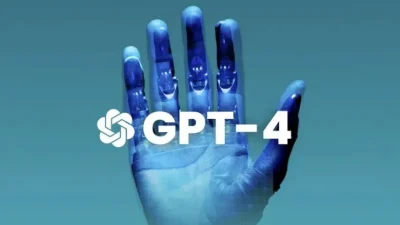Maintaining context in long conversations is one of the key challenges when interacting with AI models like GPT-4. Understanding how to preserve continuity and ensure relevance in multi-turn interactions is critical for maximizing the effectiveness of such tools. This guide explains the principles and best practices for managing long dialogues in GPT-4, with practical examples and strategies to retain context effectively.
Why Context Matters in Long Conversations
Context is essential for coherent and meaningful conversations. Without it, responses may become disjointed, repetitive, or irrelevant. GPT-4 processes text in segments, meaning its awareness of the ongoing conversation is limited by the size of its context window. Losing track of earlier parts of a dialogue can lead to:
- Repetitive Answers: The model may reiterate points already discussed.
- Irrelevant Information: Responses may deviate from the original topic.
- Loss of Specificity: Important details from earlier messages may be ignored.
Understanding how GPT-4 processes information can help you design conversations that maintain context and flow seamlessly.
How GPT-4 Handles Context
GPT-4 relies on a context window to process input and generate output. This context window includes the most recent messages exchanged in the dialogue. However, it has limitations in terms of the total number of tokens it can accommodate.
Key Factors Influencing Context:
- Token Limit: GPT-4 has a specific token limit (e.g., 8,000 or 32,000 tokens, depending on the version).
- Truncation: When the conversation exceeds this limit, older messages are truncated to make room for newer ones.
- Relevance: The model prioritizes the most recent information, but relevant earlier messages may also influence responses.
Best Practices for Managing Long Dialogues
To work effectively with GPT-4 in long conversations, consider the following strategies:
1. Summarize Regularly
Regular summaries of the conversation help to retain important information. Instead of relying solely on the model’s memory, periodically provide concise overviews.
Example:
User: We’ve discussed using AI in education, focusing on personalized learning. Can you recap our key points?
AI: Sure! Key points discussed:
- AI enhances personalized learning by adapting to individual needs.
- It provides real-time feedback to students.
- It supports teachers by automating repetitive tasks.
2. Use Explicit References
When referring to earlier parts of the conversation, restate the essential details. This ensures the model understands the context, especially in longer exchanges.
Example:
User: Earlier, we talked about the advantages of AI in healthcare. Can you expand on the role of AI in diagnostics?
AI: Certainly. AI in healthcare diagnostics includes analyzing medical imaging, identifying patterns in patient data, and predicting outcomes based on historical records.
3. Segment Complex Topics
Break down complex subjects into smaller, manageable parts. This helps maintain clarity and prevents confusion.
Example:
User: Let’s discuss AI in transportation. Start with its applications in traffic management.
AI: AI in traffic management involves optimizing traffic flow, predicting congestion, and enabling smart traffic light systems.
User: Now explain its role in autonomous vehicles.
AI: AI powers autonomous vehicles by processing data from sensors, enabling decision-making, and ensuring safety through advanced algorithms.
4. Limit Overloading the Context
Avoid overloading the context with unnecessary information. Keep interactions concise and focused to maximize the available token space.
Effective Context Management Techniques
| Technique | Description |
|---|---|
| Summarize Regularly | Provide brief overviews of previous discussions. |
| Use Explicit References | Restate key points to reinforce context. |
| Segment Complex Topics | Break discussions into smaller parts for clarity. |
| Avoid Overloading Context | Keep interactions concise and focused to save token space. |
Challenges in Long Dialogues
While GPT-4 is a powerful tool, it has limitations when managing long dialogues. Understanding these challenges is crucial for effective usage.
1. Context Truncation
When the conversation exceeds the token limit, older parts are truncated. This can lead to loss of important information, especially in detailed discussions.
2. Repetition
Without proper references or summaries, the model might repeat earlier responses, reducing efficiency.
3. Lack of Specificity
As the context grows, maintaining specificity becomes difficult. The model may provide generic answers instead of tailored responses.
Strategies to Address Challenges
Leverage External Memory
Use external tools like notes or summaries to capture important details. These can be reintroduced into the conversation as needed.
Use Structured Prompts
Start each interaction with a structured prompt that includes essential context. For instance, provide a brief summary at the beginning of a new query.
Prioritize Key Information
Focus on the most critical points, ensuring they are included in the current context window.
Example Scenarios
Scenario 1: Customer Support
User: My order #12345 hasn’t arrived yet. Can you check its status?
AI: Certainly. Based on your previous messages, the order was dispatched on [date]. Let me verify the latest update.
User: What’s the estimated delivery time?
AI: The estimated delivery is within 3-5 business days. Tracking shows it’s in transit.
Scenario 2: Project Collaboration
User: In our last session, we decided on implementing feature X. Can we discuss the next steps?
AI: Absolutely. The next steps include finalizing the design, allocating resources, and setting a timeline.
Conclusion
Effectively managing context in long dialogues with GPT-4 requires a thoughtful approach. By summarizing regularly, using explicit references, segmenting topics, and leveraging structured prompts, users can maintain clarity and continuity. Understanding the challenges and applying best practices ensures productive and coherent interactions.






